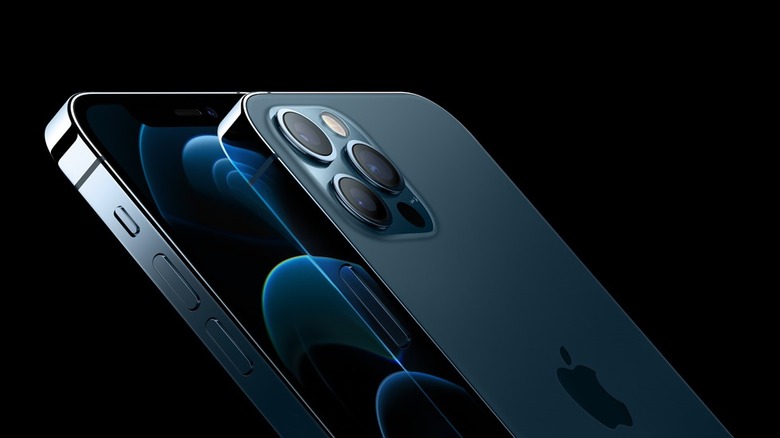New Leak Says iPhone 13 Will Have A Smaller Notch
- A new rumor says the iPhone 13 series will have almost the same design as the iPhone 12, with Apple planning a few notable changes.
- The iPhone 13 will be slightly thicker, and the phones will feature smaller notches than the Face ID notch Apple used so far on its iPhones.
- The camera system on the back will also get a makeover, and the iPhone 13 models will be slightly thicker than the iPhone 12.
The pandemic impacted every aspect of our lives last year, including the economy. Lockdowns and travel bans hurt the technology sector as well, and some products arrived much later than expected. That's what happened to Apple's iPhone 12, which launched in two phases last fall, in mid-October and early November.
But unlike other phones hurt by the pandemic, the iPhones sold well. A few of the four iPhone 12 models were sold out for weeks after launch, and the iPhones dominated sales charts over Christmas. While the iPhone 12 has been on sale for less than three months, Apple is already working on the next-gen iPhone series. As a result, the first iPhone 13 rumors have already begun to spread. Some say the new iPhones will support a 120Hz refresh rate, a feature only available on some Androids right now. Others say the iPhone camera won't get a meaningful upgrade until 2023, although LiDAR might make its way to every model. And a brand new story out of Japan claims that the iPhone 13 will deliver the design change we've been waiting for since 2017: A smaller notch.
For the most part, there are two smartphone designs on the market. Most Android phones have a hole-punch display, and most iPhone models have the same notch that the iPhone X introduced in 2017. Both these display compromises are necessary to accommodate a wide variety of cameras, sensors, and speakers.
The notch is the more palatable compromise of the two, with 3D face scanning that few Android handset makers can match. Then again, Face ID during the pandemic is basically useless with a mask on.
Smartphone vendors are already working on the perfect smartphone display without bezels or cutouts. The cameras and sensors would sit behind the OLED screen, but that technology isn't ready. Several Android vendors have shown prototypes, and others have patents which show they are studying the technology. But the big names in the mobile industry won't launch phones with under-display cameras until they're confident the performance of the selfie camera won't suffer.
There's no telling whether we'll ever have an iPhone with an under-display camera and/or Face ID system, but a smaller notch has been rumored for years. In 2020, reports said the iPhone 12 would have a smaller Face ID bezel, but it didn't come true. Unsurprisingly, the rumor has been recycled in 2021.
The latest rumor comes from the Japanese-language blog Macotakara, which offered a few 2021 iPad rumors earlier this week. The site claims it has obtained information from Chinese suppliers about the iPhone 13. As with previous iPhones, Apple is already developing the iPhone 13, but this is still a rumor that can't be confirmed.
Apple will supposedly launch four iPhone 13 models that will generally have the same design as the iPhone 12 lineup. Apple will use the same enclosure design, with the height and weight matching those of the iPhone 12. But iPhone 13 phones will be thicker by 0.26mm, according to the report.
As for the notch, the blog says that the receiver at the top of the display has moved to reduce the size of the TrueDepth camera system. The report also addresses the rear camera module, saying that the iPhone 13 Pro and iPhone 13 Pro Max's cameras will be the same size. This implies that the iPhone 13 Pro will have the same lenses as the Max. That's not the case with the iPhone 12 Pro, as the iPhone 12 Pro Max features a unique telephoto lens that delivers 2.5x optical zoom and an ultra-wide sensor with sensor-shift stabilization.
The rear camera will grow by about 0.9mm on every model, so the camera systems will still protrude. But Apple will reportedly use a new design for the camera module, covering the entire unit with sapphire glass.
Apple is expected to launch the iPhone 13 in September, providing the pandemic doesn't cause another delay.
